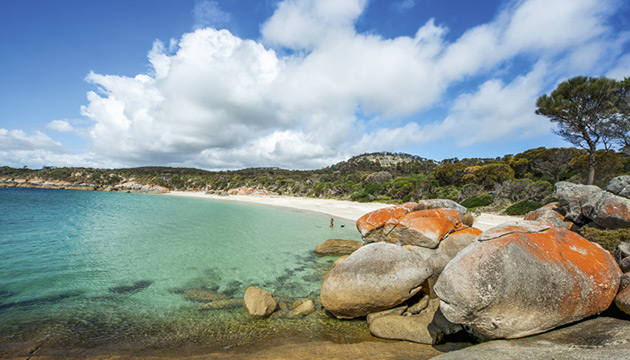Story By Cormac Hanrahan
“Within moments of the first time I set foot on Flinders Island I was handed a cray, pointed in the direction of a shack and told the door was open,” says photojournalist Cormac Hanrahan. He says it felt like his 50-minute flight from Melbourne, in 2014, had taken him back to a more hospitable time, such as the 1950s. “This kind of instinctive generosity and immediate trust is of course not uncommon in the bush. Yet there is something about Flinders Island that sets it apart from other pastoral settings. Perhaps it’s the sea.”
Flinders Island, the largest of the undrowned mountaintops scattered across Bass Strait like stepping-stones from the mainland to Tasmania, has some 900 residents. Resourceful and creative, they all seem to be good at four or five different things – catching crays, farming garlic, or making wine, aside from the mainstays of fattening sheep and cattle, and making visitors feel welcome.
Some 75 km long and 40 km wide, the island is fringed by the sort of beautiful beaches normally associated with holidays in Queensland, except they have nobody on them. Its grey granite mountains lend a deceptively highland feel to the cattle grazing at sea level. The highest, 756-metre Mt Strzelecki, was named after the Polish explorer Paul Strzelecki who climbed it in 1842 – just one of many who have visited and loved this Bass Strait wonder.
This Story is from Issue #104
Outback Magazine: Dec/Jan 2016










